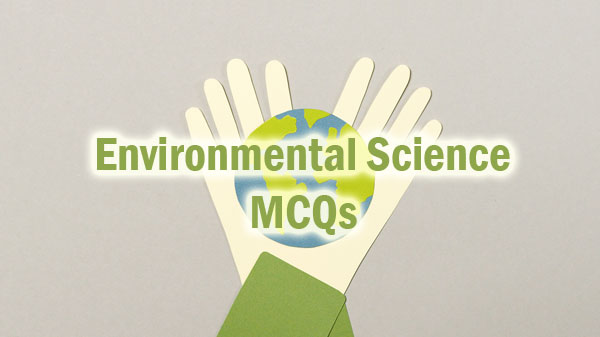Environmental Studies Typical Question
Download all Environmental Studies Typical Question Papers here. We are providing Environment Science Typical Question Papers. We have given the solutions for EVS solved Typical Question Papers to make your preparation efficient. Click here to Download the Environment Science Typical Question Papers from the attached pdfs.

EVS Typical Question Papers attached in the PDF Format so the aspirants can download quickly. Along with these Environmental Studies Typical Question papers, we have attached Environment Science Syllabus and Exam Pattern. Environmental Studies Typical Question Papers are available. Applicants can download EVS Typical Question Papers.
Also, get the Study material, Preparation tips in addition to the EVS Typical Question Papers for posts. On our page, we provide Environmental Studies Typical Question Papers for the sake of aspirants.
Typical Question on Environmental Studies
1. Which is the major source of carbon monoxide to the Urban air environment ?
(A) Industrial processes
(B) Solid waste
(C) Stationary fuel combustion
(D) Transportation
2. The spectral signature of water ranges between …………
(A) 0.3 to 0.7 µm
(B) 0.9 to 1.3 µm
(C) 0.5 to 1.5 µm
(D) 0.9 to 1.2 µm
3. What is incorrect condition for efficient anaerobic digestion process ?
(A) Maintain pH between 6.8—7.2
(B) SRT/HRT >> 1-10
(C) Volatile fatty acids (100-500 ppm)
(D) Presence of more butyric acid (> 500 ppm)
4. Which high rate anaerobic digester retains very high concentration of active biomass and operate at high loading rate of 5-20 kg COD/m3- day ?
(A) Upflow anaerobic sludge blanket reactor (UASB)
(B) Anaerobic baffled reactor
(C) Floating dome bioreactor
(D) Plug flow bioreactor
5. Which high rate process adopts high upflow velocity of influent waste-water to expand the biocarrier by 15-30% ?
(A) Static Granular Bed Reactor (SGBR)
(B) Anaerobic Filter Reactor (AFR)
(C) Expanded Bed Bioreactor(EBR)
(D) Fluidized Bed Bioreactor (FBR)
6. Which plant has endosymbiotic Anabaena and used as biofertilizer for paddy fields ?
(A) Orchid
(B) Monotropoid
(C) Arbutus
(D) Azolla
7. A group of metabolically related bacterial population in a microbial ecosystem are commonly known as ……………….
(A) Ecotone
(B) Population
(C) Communities
(D) Guilds
8. What simple and effective strategy is recommended in case the compositing material “ball up” and restrict the air flow due to excess initial moisture (> 65%) ?
(A) Incorporate bulking agent
(B) Amendment with anhydrous sodium sulphite
(C) Extend thermophilic phase during composting
(D) Continue the composting for prolong period
9. Why is moisture level of 50-60% desirable for more microbial activity at the initial stages of composting ?
(A) To increase compact structure of compost
(B) To lower down diffusion of air
(C) To allow biofilm formation on compost material
(D) To increase micropore formation for holding water
10. What chemical property of a pesticide confers resistance to microbial degradation ?
(A) More solubility of pesticide in water
(B) Inert resonance structure of pesticide
(C) Less complex structure of pesticide
(D) Pesticide with more acetyl group.
11. Which microbial process metabolize the pesticide to CO2 and water as end product ?
(A) Biomineralization
(B) Co-dissimilation
(C) Bioreduction
(D) Conjugate with sugars
12. What is true about characteristic of filter packing media used in trickling filter system for treatment of waste-water ?
(A) Less surface area per unit volume
(B) Low durability and biodegradable
(C) High porosity to minimize clogging
(D) Inert and toxic to microbes
13. Which process has capacity to remove nitrogen in effluent with low C :N ratio and operate alternate aerobic and anaerobic conditions ?
(A) Bardenpho process
(B) Air stripping of ammonia
(C) Anammox process
(D) Ludzack-Ettinger process
14. Which of the following bacterial activities contributes to the formation of natural sulphur deposits from hydrogen sulphide gas ?
(A) Baggiota spp.
(B) Methanosarcina spp.
(C) Thiobacillus thioxidans
(D) Desulfovibrio spp.
15. What is the basis used for identification of positive interactions within the microbial population ?
(A) Prolong stationary phase of microbes
(B) Extended lag period of microbial growth
(C) Short log period of microbial growth
(D) Rapid decline in microbial population
16. Which bacterium contributes to the conversion of nitrates to elemental nitrogen in biogeochemical cycle ?
(A) Nitrosomonas europaea
(B) Nitrobacter winogradskyi
(C) Rhizobium leguminosarum
(D) Micrococcus denitrificans
17. In what way is nitrogenase activity protected from oxygen in nodules of Rhizobium-legume symbiosis ?
(A) Rhizobium secret slime
(B) Leghaemoglobin
(C) Rhizobium secret oxygen insensitive nitrogenase
(D) Nodules provide anaerobic environment
18. The harvester ant Pogonomyrmex occidentalis enriches its nest with the following microbe that possess high endophytic infection :
(A) Orchid mycorrhizae
(B) VAM spores
(C) Monotropoid mycorrhizae
(D) Arbutus mycorrhizae
19. Maize appears in the American southwest around …………, in the east around ……………
(A) 6000 BP; 5800 BP
(B) 4000 BP; 3200 BP
(C) 3500 BP; 1800 BP
(D) 2000 BP; 1600 BP
20. The term …………. is related to the distribution of equal amount sunshine.
(A) Isonephs
(B) Isophene
(C) Isophaline
(D) Isohel
More Questions on Environmental Science
21. The maximum concentration of ozone in the atmosphere is observed between ……………
(A) 10 to 20 km.
(B) 20 to 30 km.
(C) 30 to 50 km.
(D) 50 to 60 km.
22. …………… affects the angle at which the sun’s rays reach the earth.
(A) Weather
(B) Wind
(C) Latitude
(D) Sea level
23. Identify a group of hazards caused by endogenous forces of the earth:
(A) Earthquake —- landslide — drought
(B) Earthquake — volcano — flood
(C) Volcano — landslide — tsunami
(D) Earthquake — tsunami — forest fire
24. …………. the type of boundary where Nepal earthquake happened in year 2015.
(A) Destructive boundary
(B) Conservative boundary
(C) Continent-—continent collision boundary
(D) Island-are boundary
25. The data products of the India region are generally produced in ___________ projection for LISS I, II and III and PAN images.
(A) Polyconic
(B) Cylindrical
(C) Mercator
(D) Azimuthal
26. Which of the following errors can be reduced by taking repeated measurement ?
(A) Random error
(B) Systematic error
(C) Both of the above
(D) None of the above
27. Which of the following impact identification is problematic in the EIA process ?
(A) Direct
(B) Positive
(C) Negative
(D) Cumulative
28. What will be the resultant noise at the workshop operating four equipments each emitting equal sound of 55 dB (A) ?
(A) 60 dB (A)
(B) 61 dB (A)
(C) 110 dB (A)
(D) 58 dB (A)
29. Which of the following is correct for the cross impact matrix ?
(A) Display of environmental factor against other environmental factor
(B) Display of environmental factors against project action
(C) Display of environmental factors against constructional activities of initiating action
(D) Display of environmental factors against operational activities of initiating action
30. Who developed the network method for impact identification in EIA ?
(A) Soloman et al, 1977
(B) Odum et al, 1975
(C) Sorensen, 1971
(D) Stover, 1972
31. Which of the following indicates the necessity of EIS preparation under Section 102 of NEPA 1969 ?
(A) Part A
(B) Part B
(C) Part C
(D) Part D
32. Narrow sandy islands that form offshore from a coastline are called
(A) Oceanic Islands
(B) Island Arcs
(C) Barrier Islands
(D) Seamounts
33. Deeper lakes are characterized by the presence of a warmer upper layer that is mixed by the wind and colder, deep layer is not mixed, the two layers are separated by a distinctive temperature transition zone called the………
(A) Thermofrost
(B) Thermostat
(C) Thermocline
(D) Thermoline
34. ……………………is a biofertilizer.
(A) Nostoc
(B) Pediamstrum
(C) Scenedesmus
(D) Nitzschia
35. A natural resource is to be conserved by :
(A) Moratorium on its use
(B) Its consumption as needed
(C) Storing it is a safe way
(D) Maintaining balance between its consumption and regeneration
36. The Ten Percent Law refers to :
(A) dynamics of minerals in an ecosystem
(B) dynamics of energy in an ecosystem
(C) number of individuals at each trophic level in an ecosystem
(D) biomass built up at each trophic level in an ecosystem
37. Mineral ores, fossil fuel deposits and stones are the examples of :
(A) Energy Resources
(B) Non-renewable resources
(C) Renewable resources
(D) Perpetual resources
38. Species that occur in different geographical regions separated by special barrier are :
(A) Allopatric
(B) Sympatric
(C) Sibling
(D) Habitat
39. An ecosystem should have continuous external source of :
(A) Energy
(B) Habitat
(C) Food
(D) Minerals
40. Which of the following radioisotope is present in human body ?
(A) I-125
(B) P-32
(C) Na-24
(D) C-14
41. In order to prepare 100 mL solution of 10 ppm NaCl, how many grams of NaCl are needed ?
(A) 1.0
(B) 58.5
(C) 0.001
(D) 0.585
42. Wavelength range for X-ray region is :
(A) 0.0001—0.01 A
(B) 150—400 A
(C) 400—800 A
(D) 0.1—100 A
43. Disease caused by eating fish from mercury contaminated water is :
(A) Fluoresis
(B) Minamata
(C) Osteoporesis
(D) Scurvy
44. Flame ionization detector is used in which of the following Instrument ?
(A) Spectrophotometer
(B) Gas chromatograph
(C) Scintillation counter
(D) X-ray diffractometer
45. The study of individual organism’s relationship with its environment is called as :
(A) Monoecology
(B) Autecology
(C) Ecology
(D) Synecology
46. Neutralism is a type of interspecific relationship where :
(A) One or both species are benefitted
(B) At least one of the species is harmed
(C) None of the two species are affected
(D) Both the species are affected
47. Which one of the following is not observed in biodiversity hotspots ?
(A) Species richness
(B) Endemism
(C) No inter-specific competition
(D) Greater inter-specific competition
48. Which of the following acid is produced by incomplete oxidation rather than a true fermentation ?
(A) Gluconic acid
(B) Acetic acid
(C) Citric acid
(D) Lactic acid
49. Savana climate favours :
(A) Coniferous forest
(B) Grasslands
(C) Climbers
(D) Evergreen forest
50. The change of state of ice into water vapor is known as :
(A) Deposition
(B) Sublimation
(C) Melting
(D) Condensation

